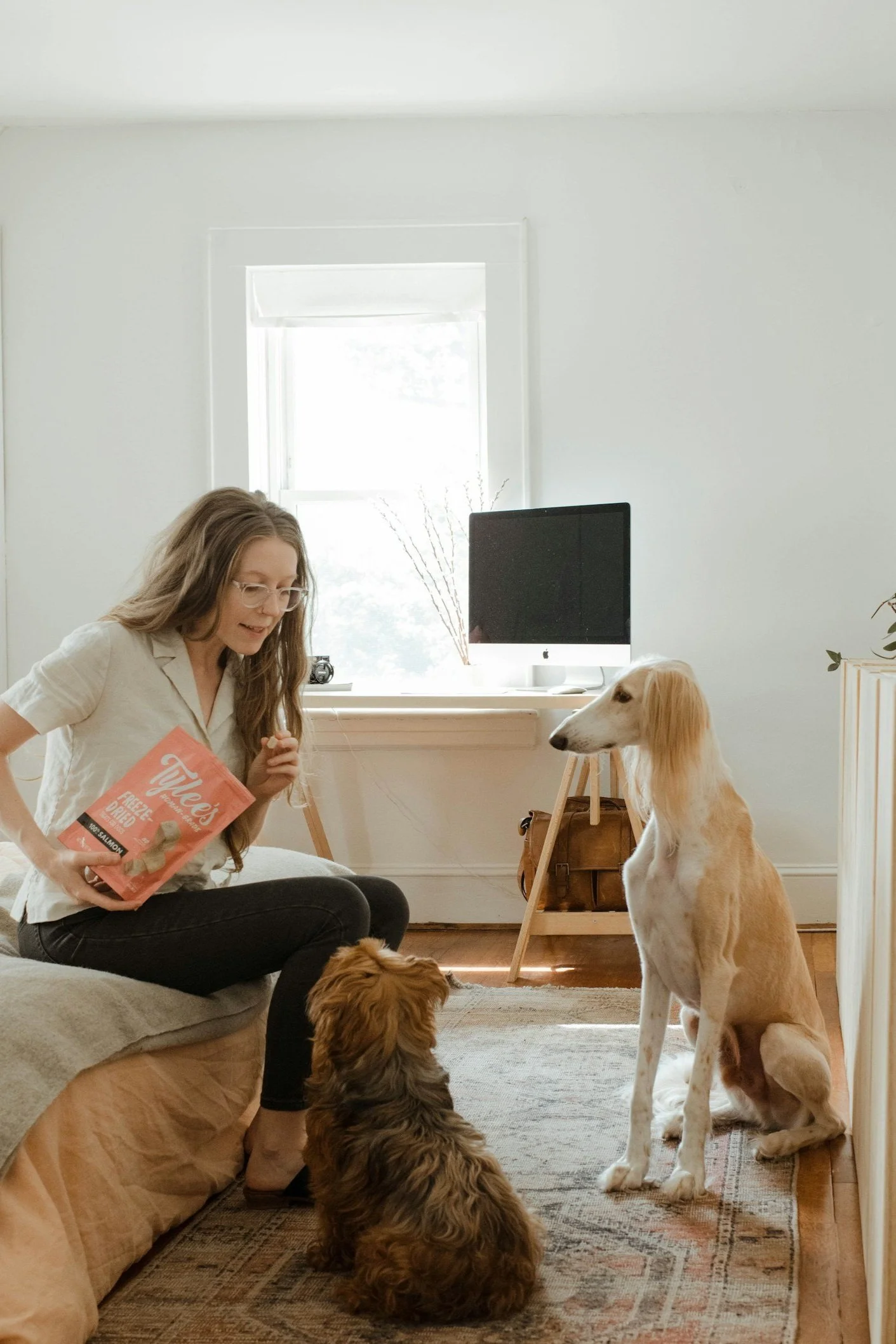Empowering Dogs with Force-Free & Fear Free Methods
In my training approach, I prioritize giving dogs the ability to make choices, allowing them to feel more comfortable and confident in their world. Rather than forcing dogs into situations that may cause fear or stress, I believe in using techniques that empower them and respect their boundaries.
Allowing Dogs Choice
One of the core principles in my training is allowing dogs to have a say in what happens to them. Dogs, like people, thrive when they feel they have some control over their lives. For instance, if a dog hesitates before approaching something new or unfamiliar, I don’t push them forward. Instead, I let them choose when and how to engage. This reduces fear and helps build trust, showing them that their preferences are valued.
Letting Dogs Opt Out
In addition to providing choices, I also allow dogs to opt out of activities they find uncomfortable or scary. For example, if a dog is nervous around new people, I give them the option to move away from the situation rather than forcing them to stay. This approach helps dogs feel safer and more in control, reducing their anxiety and making it easier to build positive associations over time.
Respecting Boundaries Based on Body Language
A dog’s body language is a key indicator of their comfort level, and respecting these signals is crucial to maintaining a fear-free environment. Signs like turning away, licking lips, yawning, or tensing up can indicate discomfort or stress. By recognizing and honoring these boundaries, I ensure that training stays respectful and supportive. This strengthens the dog-owner relationship and fosters a more cooperative dynamic.
Teaching Dogs They Have Control: Start Button and Default Behaviors
One of the most powerful ways to empower dogs is by teaching them they have control over their experiences. I use two key techniques for this: start button behaviors and default behaviors.
Start Button Behaviors are pre-taught skills that allow dogs to give consent to move forward with an activity. For example, if I’m about to trim a dog’s nails, I might teach them to offer a paw when they’re ready for me to start. This way, the dog has a clear way to signal their consent, giving them a sense of control over the process.
Default Behaviors are behaviors the dog has mastered and will offer on their own to indicate they want something to continue. For instance, a dog may sit calmly when they want you to keep playing or offering treats. This allows dogs to communicate their desires in a way that’s clear and effective, while also reinforcing good behavior without stress or pressure.
By teaching dogs these behaviors, they learn that their actions can influence their environment in a positive way. This not only builds their confidence but also encourages them to engage in cooperative behaviors that make both the dog and the owner feel more connected and in sync.
Need more resources to help your dog? Check out Holistic Dog Behavior The Podcast for free tips, expert advice, and actionable strategies to support your dog’s journey.




